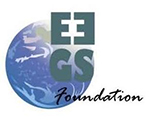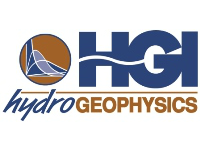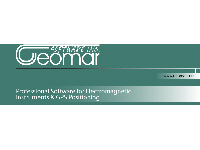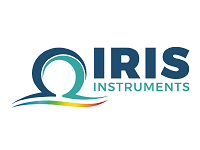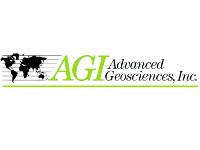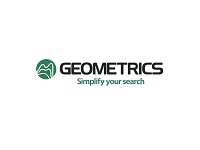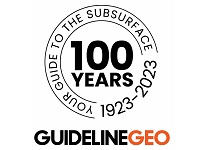SAGEEP 2016 Short Courses/Workshops
Sunday, March 20, 2016
SC-1: geoDRONEology: INTEGRATING DRONES INTO THE GEOSCIENTIFIC AND ENGINEERING WORKFLOW
Instructors: Ronald S. Bell, Senior Geophysicist, President, AGS, LLC; Rene A. Perez, PG, CHG, Senior Consultant, Hydrogeology, earthforensics, inc.
Time: 8:00 am - 5:00 pm
Multi-rotor and fixed-wing autonomous robotic aircraft, commonly known as “drones”, are the latest technical innovation being applied to the acquisition of geospatial and geoscientific data for asset management, geological investigations, and environmental monitoring. This short course will provide you with up-to-date information on how to begin using small unmanned aircraft systems (sUAS) equipped with visible light and infrared cameras for surface investigations and magnetometers for subsurface site characterization. A strong emphasis is placed on the practical implementation of drones for photogrammetry, infrared and spectral imaging, and magnetometry through the use of numerous case histories. Recent changes in the rapidly evolving regulatory framework governing sUAS including the recommended best practices for legally operating drones for profit will be reviewed. There will be a “wrap up discussion” on the several issues of concern including but not limited to a) the implementation of detect and avoid technologies, b) beyond line of site operations, c) night time flights, and d) drone swarms.
SC-2: GROUND PENETRATING RADAR - PRINCIPLES, PRACTICES AND PROCESSING
Presenter: Greg Johnston, Sensors & Software, Inc.
Time: 8:30 am - 4:30 pm
Ground Penetrating Radar (GPR) is a non-invasive subsurface exploration technique that has found widespread application in areas including near-surface geology (<100 meters), geotechnical and environmental surveys, mine safety, forensics, archaeology, utility location, concrete inspection, snow thickness measurements and glaciology. This one day course will introduce the principles of GPR and GPR instrumentation, discuss survey design, provide hands-on data acquisition with a GPR system and explore data interpretation (including common pitfalls), data processing and data visualization in 2D and 3D. The course also includes case studies of common and not-so-common applications of the technology. No prerequisites required. Students will receive printed course notes and a memory stick with a PDF copy of a GPR textbook written by Dr. Peter Annan, the CEO and founder of Sensors & Software. Attendees need to come prepared to work for 2-3 hours outside and, if interested, bring a PC-based laptop for the data processing portion of the course. The laptop should have GoogleEarth installed, if possible.
THURSDAY, March 24, 2016
SC-3: SATELLITE INSAR DATA: SURFACE DEFORMATION MONITORING FROM SPACE
Presenter: Alessandro Ferretti, TeleRilevamento Europa Milan, Italy (special EAGE-sponsored EET course - If not currently an EAGE member, registration rate also includes EAGE membership)
Time: 8:30 am - 4:30 pm
Satellite radar data for surface deformation monitoring are gaining increasing attention, and not only within the oil and gas community. They provide a powerful tool for remotely measuring extremely small surface displacements over large areas and long periods of time, without requiring the installation of in-situ equipment. However, apart from remote sensing and radar specialists, only a relatively small number of geoscientists and engineers understand how a radar sensor orbiting the Earth at about 7 km/s from 700km above the Earth's surface can actually measure ground displacements of a fraction of a centimeter. This course provides a step-by-step introduction to satellite radar sensors, SAR imagery, SAR interferometry and advanced InSAR techniques. Rather than a tutorial for remote sensing specialists, the course starts from very basic concepts and explain in plain language the most important ideas related to SAR data processing and why geoscientists and engineers should take a vested interest in this new information source. Instead of providing a thorough analysis of InSAR algorithms, the main aim of the course is to diffuse the news about the potential impact of InSAR results on many real-life applications, highlighting where and when they can provide effective solutions. Participants will learn that InSAR is not only an information source for research and development activities, but also a reliable tool that can be applied successfully to many different applications, spanning from sinkhole detection to reservoir optimization.
Special attention will be paid to oil and gas applications where surface deformation data can provide valuable constraints on reservoir dynamics, enabling time lapse monitoring of volumetric strains at depth. Volume changes in the reservoir induced by fluid extraction and injection can induce both subsidence and uplift. Stress changes may then trigger the reactivation of faults and threaten well integrity. Depending on the depth of the reservoir and the characteristics of the cap rock, deformation may also be detectable at the surface.
W-1: SUMMIT ON DAMS AND LEVEES
Presenters: William Doll, Tetratech; Phil Sirles, Olson Engineering; Mike Powers, U. S. Geological Survey; Craig Hickey, University of Mississippi; Mark Dunscomb, Schnabel Engineering; Todd Roberts, Roctest, Ltd.; Tomio Inazaki, Public Works Research Institute (Japan); Nate Snorteland, U.S. Army Corps of Engineers; Juan Lorenzo, Louisiana State University; Gianfranco Morelli, Geostudi Astier (Italy); Richard Lee, Gannett Fleming; Koichi Hayashi, Geometrics; Ernst Niederleithinger, Bundesanstalt für Materialforschung und –prüfung
Time: 8 am - 5 pm
It is now widely recognized that the infrastructure in the US is in poor condition, and this is but one example of a larger global problem for public safety. Dams and levees, often constructed in an era of less stringent design and construction requirements, are among the infrastructure elements that are of great concern; particularly, as populations increase and relocate in proximity to formerly remote dam and/or levee structures. Geophysics offers many tools that can be used for large-scale assessment and internal imaging, as well as more localized subsurface material characterization of problem areas. Many geophysical and advanced monitoring methods have been developed and deployed and in countries throughout the world.
This forum on dams and levees is designed to bring together geophysicists from many countries to a common venue to share knowledge and experience, as well as discuss the future needs that our industry can provide for addressing this critical problem. The forum includes speakers from leaders in industry, government, and commercial application of state-of-the-practice methods and advancements to stat-of the-art for imaging and monitoring small and large structures with remote/satellite, heliborne, driven, and handheld instruments, which can be deployed once or installed for monitoring these structures.
Thanks to these Summit Sponsors:
|






